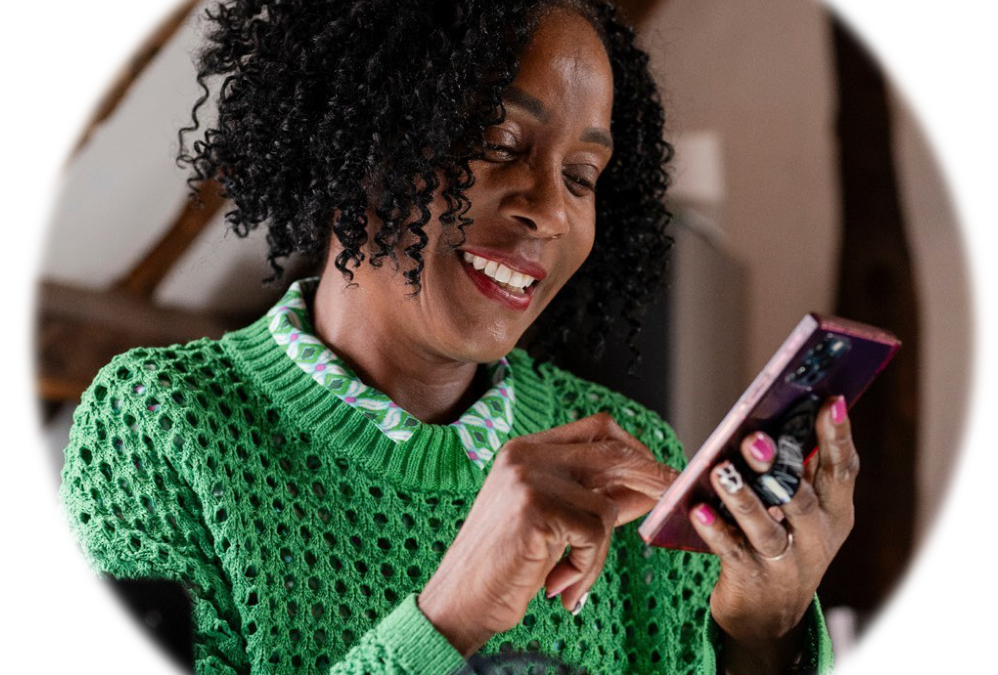
Introduction
In the world of fundraising, innovative solutions are key to maximizing donor contributions and ensuring the sustainability of non-profit organizations. One powerful tool in the fundraiser’s arsenal is the Charitable Gift Annuity (CGA). While many are familiar with funding CGAs through cash contributions, fewer realize the potential to fund them using non-cash assets. This approach can unlock untapped resources for charities while providing significant benefits to donors.
Understanding Charitable Gift Annuities (CGAs)
A Charitable Gift Annuity is a contractual agreement between a donor and a non-profit organization. In return for a sizable donation, the non-profit agrees to pay the donor a fixed income for life. After the donor passes away, the remaining funds are retained by the organization, helping to further its mission.
Benefits for Donors:
- Lifetime Income: Donors receive a steady income stream, which can be particularly valuable for retirees.
- Tax Deductions: Donors can enjoy significant charitable tax deductions.
- Legacy: Donors leave a lasting impact on a cause they care about deeply.
Benefits for Non-Profits:
- Immediate Funding: Non-profits receive immediate funds, which can be used to support their operations and initiatives.
- Long-Term Growth: The eventual retention of the gifted assets helps build the organization’s endowment.
The Potential of Non-Cash Assets
Non-cash assets represent a vast and often underutilized resource. These assets can include real estate, securities, art, collectibles, and even business interests. Each type of asset presents unique opportunities and challenges, but with proper management, they can significantly enhance the funding of CGAs.
Types of Non-Cash Assets:
- Real Estate: Properties, both residential and commercial, can be donated. This option can provide substantial tax benefits and avoid capital gains taxes.
- Securities: Stocks, bonds, and mutual funds can be used to fund CGAs, offering donors the ability to contribute appreciated assets without incurring capital gains tax.
- Art and Collectibles: High-value items such as artwork, antiques, and rare collectibles can be liquidated to fund CGAs.
- Business Interests: Shares in privately held companies or partnerships can be contributed, enabling business owners to leverage their investments for philanthropic purposes.
Steps to Fund a CGA with Non-Cash Assets
- Identification and Valuation
The first step in the process is identifying suitable non-cash assets. This often involves working closely with donors to understand their portfolios and philanthropic goals. Accurate valuation of these assets is crucial, as it determines the annuity payments and tax deductions.
- Professional Appraisal
For assets like real estate and collectibles, a professional appraisal may be necessary to establish fair market value. This step ensures that both the donor and the non-profit receive fair treatment in the transaction.
- Legal and Financial Consultation
Involving legal and financial advisors is essential to navigating the complexities of non-cash asset contributions. Advisors can help structure the gift to maximize benefits for the donor while ensuring compliance with relevant regulations.
- Transfer and Liquidation
Once the asset has been valued and legal considerations addressed, the asset is transferred to the non-profit. For certain assets like stocks, this might involve a straightforward transfer of ownership. For others, such as real estate, the process might include selling the asset to convert it into cash.
- Establishing the Annuity
With the proceeds from the non-cash asset, the non-profit establishes the CGA, setting up regular annuity payments for the donor. The terms of the annuity will depend on various factors, including the donor’s age and the value of the gift.
Success Stories and Testimonials
Hearing about real-world examples can provide inspiration and confidence for both fundraisers and potential donors. Consider sharing stories of successful CGA arrangements funded by non-cash assets. Testimonials from satisfied donors can be particularly persuasive.
Example 1:
Jane Doe donated a piece of commercial real estate to fund a CGA. By doing so, she avoided a large capital gains tax bill and secured a steady income stream for her retirement. “Knowing that my property is supporting a cause I care about, even after I’m gone, is incredibly rewarding,” Jane shares.
Example 2:
John Smith, a retired executive, used appreciated stock to fund his CGA. “The tax benefits were substantial, but the real value was in the peace of mind and the legacy I’m leaving,” John explains.
Conclusion
Charitable Gift Annuities funded by non-cash assets offer a win-win solution for donors and non-profits alike. By exploring these options, fundraisers can unlock new avenues of support, ensuring the continued growth and impact of their organizations.
Are you ready to leverage non-cash assets for your charitable gift annuities? Contact our team of experts today to learn more and get started on your philanthropic journey.

PG Smiling and Dialing Joe Tumolo, CAP®
How many times a day are you picking up the phone to call a loyal donor who is not expecting your call to generate a new planned giving conversation? More and more nonprofits are relying on marketing and online will writing platforms to generate those conversations. These tools are important and should be used to supplement personal outreach, not replace it.
Despite all the advancements in technology, software and AI, the old fashion telephone remains one of the strongest tools we as fundraisers own but fewer people are using it to its full potential. It’s easy to get sucked into the daily work that can keep us from making the time to call donors on a consistent basis. And yes, it is getting more difficult to get people to answer the phone. However, our donors most likely to answer their phones are the people most likely to make a planned gift. The baby boomers.
When you create and stick to a process for picking up the phone on a consistent basis, you will reach more people than you think.
Developing your process
Over the last 10 years I have developed, tested and refined, a process to guarantee that I pick up the phone on a daily basis to generate new gift conversations. The process is comprised of 3 steps:
- MINDSET
The right mindset keeps you smiling and dialing no matter how people respond to your outreach.
- The right mindset is comprised of:
- Having fun making the calls. Make a game out of it. “How many calls can I make today? It’s 5:00 on a Friday. Let me make one more call and see if I can have an amazing donor conversation”.
- Remembering the good conversations you had the last time you made your calls.
- Remind yourself that’s it’s not about us. It’s about the donor, the people we serve and our staff who deliver our mission.
The classic book, The Four Agreements teaches us that when we take things personally, we are being selfish because we are making it all about us. Decades ago I was taught a great mantra that I use and teach on a weekly basis:
SW4
Some Will
Some Won’t
So What
SOMEONE’S WAITING
Someone’s waiting. Someone out there is going to be open to my outreach. This will keep you smiling and dialing.
- BEHAVIOR
To maintain consistent outreach, you must develop and track goals for how many times a day or week you will pick up the phone to call someone, not expecting your call. I fully recognize that everyone is understaffed and overworked. At the same time we often spend our time doing things we really don’t need to do. Check out the book Essentialism by Greg McKeown. Greg teaches it’s not about getting more things done, it’s about getting the right things done.
All we can control is our mindset and our behavior. We cannot control if someone answers the phone or welcomes our outreach. We can control how often we pick up the phone. My goal is to pick up the phone and make 50 calls per week. Your number may be much lower. The point is having a number and sticking to it. Do whatever you have to do to reach or exceed that number every week.
Ideas to do this:
- Write a list of the Donors you want to call each week. Include their phone number and any pertinent information you want if you get them on the phone. Carry that list with you everywhere. Early for an appointment? Make a couple of quick calls from your car. Sitting in an airport with a flight delay (very common these days)? Get your list out and make some calls.
- Schedule your calls. Example, “Tuesday from 9:00am to 11:00am I am making my calls. I’ll close my door, put my do not disturb on my phone and make my calls”.
- TECHNIQUE
Getting results on our calls requires that we continually refine and develop our skillsets to have more and better conversations. Here is a list of key areas you should focus on:
Outcome goal-before you pick up the phone, determine what outcome you would like from the call. Setting up an online or in person Zoom? Checking in to say thank you and pre-qualify someone before taking the time to go see them? If your goal is to visit with them, you must give them a compelling reason to do so.
Make it about them not you. Example: “Donors I meet with tell me they really benefit from a conversation about the impact of their gifts and how they can have an even bigger impact”.
Don’t sound like a robo caller. This is our biggest competition. We must show donors immediately that we are professional fundraisers. How do we do this? Speak slowly. Pause a lot, allow for open space. Start by asking your donor if you caught them in the middle of something urgent? Most people are not doing something urgent and will respond with a “no”.
Ask them why they have been so loyal to your organization.
Ask if there is anything you can do to better serve them as a donor. Asking this question separates you from most other fundraisers you are competing with.
Things to say to get the Visit
Assuming the conversation is going well, you can ask them this powerful question “If I/we could give you a compelling reason to do more, how would you feel about a conversation around that”? Can I buy you a cup of coffee (lunch, etc.) to discuss that?
Some donors tell me they would like to have a bigger impact on the people we serve but are not sure how to do that and still accomplish their retirement goals and provide for their children/grandchildren. There are ways you can do that, and I can share them with you when we meet.
I really enjoy speaking with you. I am going to be out visiting other donors next week, can we get together for 30 minutes?
The more of the right activity you do the more, good things happen. What kind of results can you expect with consistent smiling and dialing? I use the 20% rule. It has held up over the years and other consultants I speak with tell me the same.
- I’ll connect with 20% of the people I call.
- 20% if the people I speak with will be open to a meaningful conversation
- 20% of those people are likely to do more outright or deferred.
As a baby boomer and planned giving donor myself, I speak on behalf of all my peers. Pick up the phone, call us. Make it about us and how we will benefit from a conversation with you. You will be amazed at the conversations you will have.
For more ideas on generating more planned gifts, check out my Cup O Joe Videos.
https://www.youtube.com/@JoeTumolo
Want to talk about how I might help you grow your planned giving program? Call me at 610-653-7906 or email me at joe@plannedgivingpartner.com


